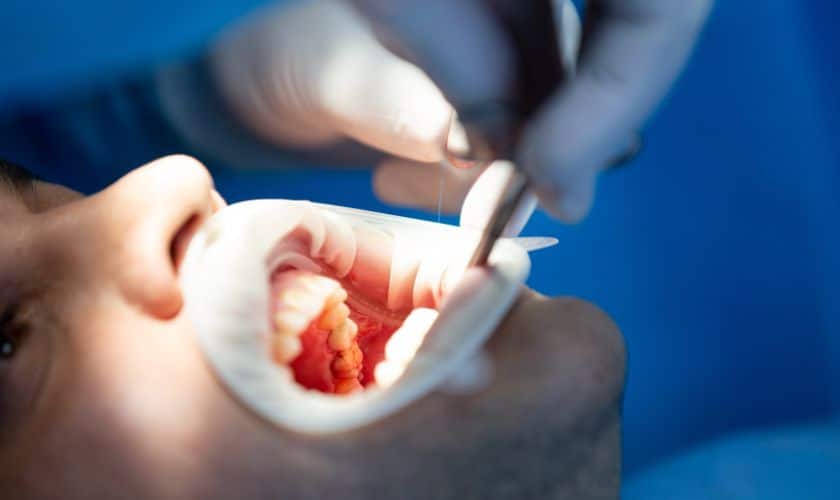Welcome to our dental health blog! Today, we are going to talk about dental sealants – a common preventive treatment that can protect your teeth from decay and cavities. If you’re wondering how long dental sealants last or how to maintain them properly, then this post is for you. Dental sealants are a cost-effective way of protecting your teeth in the long run, so it’s essential to understand their lifespan and maintenance requirements. So let’s dive into the world of dental sealants and explore everything there is to know about them!
What is a Dental Sealant?
A dental sealant is a thin, protective coating that is applied to the surface of teeth. It’s often used to prevent tooth decay and cavities in children and adults alike.
Sealants are typically made from plastic or resin materials that bond tightly to the enamel of teeth, creating a barrier against harmful bacteria and acids.
The process of applying sealants is quick and painless. After thoroughly cleaning the teeth, your dentist will apply an acidic solution to roughen up the surfaces where the sealant will be placed. This helps create a stronger bond between the sealant material and tooth enamel.
Once this step is complete, the liquid sealant material is applied to each tooth with a brush or applicator. The material then hardens quickly under a special light.
With proper care, dental sealants can last for several years before needing replacement. They’re especially effective at preventing decay on chewing surfaces of molars and premolars in young people whose oral hygiene habits may not yet be fully established.
Dental sealants provide an easy way to protect your teeth from decay without any invasive procedures or discomfort.
How Sealants Work?
Dental sealants are a popular preventive measure used to protect teeth from decay. But how do they work? Let’s take a closer look.
Sealants are made up of a thin, plastic material that is painted onto the chewing surfaces of the back teeth. The sealant then bonds to the surface of the tooth, creating a protective barrier between bacteria and food particles and your teeth.
The chewing surfaces of our molars and premolars have deep grooves and fissures where food particles can easily get trapped. These areas are difficult to clean with brushing alone, making them more susceptible to decay over time.
By filling in these crevices with sealant material, we’re able to prevent bacteria from settling into those hard-to-reach spots. This helps keep your teeth cleaner overall and reduces your risk for cavities.
It’s important to note that while sealants can be an effective tool for cavity prevention, they don’t replace good oral hygiene habits like brushing twice daily and flossing regularly. Regular dental check-ups are also essential for maintaining good dental health!
How to Apply a Dental Sealant?
Applying a dental sealant is a straightforward procedure that can be done by your dentist or dental hygienist. Before the application, the teeth to be sealed are thoroughly cleaned and dried. Then, an acidic solution is applied to roughen up the surface of the tooth so that the sealant will stick properly.
Once the tooth has been prepared, the sealant material is painted onto it with a brush. The liquid resin then hardens into a durable plastic coating when exposed to blue light. The process may take only a few minutes per tooth.
The most common areas for dental sealants are molars and premolars as they have deep grooves and fissures in which food particles can get trapped leading to decay. Sealants protect against cavities by preventing bacteria from entering these crevices.
It’s essential to note that while applying dental sealant requires skill and expertise on behalf of your dentist or hygienist; it’s entirely painless and non-invasive for you.
How to Remove a Dental Sealant
Removing a dental sealant is not as complicated as it may seem. Sealants usually last for several years, but there are cases when they need to be removed before their lifespan ends. Here’s how you can remove a dental sealant.
First, the Phoenix dentist will inspect the tooth with the sealant to determine whether it has to be removed. If removal is required, they will use a drill to carefully remove the top layer of sealant.
After this step, your dentist will check if any part of your tooth still has leftover adhesive material from the previous application. They might also polish your tooth so that its surface becomes smooth once again.
Once all remnants of old seals have been removed by your dentist and polished down to an even finish, you can now proceed with applying new ones if needed!
It’s important to note that only dentists should perform this procedure because doing it yourself could cause damage or further issues with teeth health!
Summary
To sum up, dental sealants are a great way to protect your teeth from decay and cavities. They are easy to apply, painless, and long-lasting. By following good oral hygiene practices and regular check-ups with your dentist, you can ensure that your dental sealants last for many years.
Remember that while sealants are effective in preventing tooth decay, they do not replace the need for proper brushing and flossing. Maintaining good oral health habits is still essential to keeping your teeth healthy.

